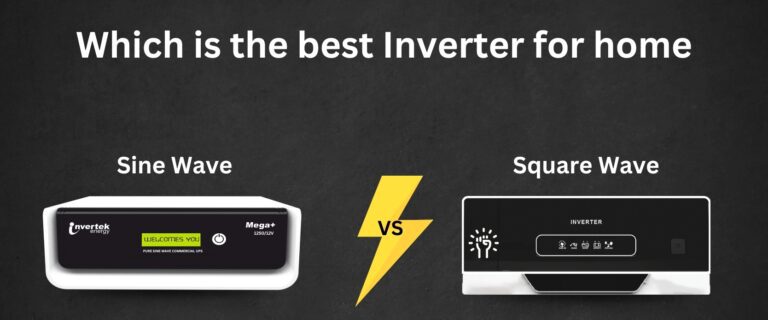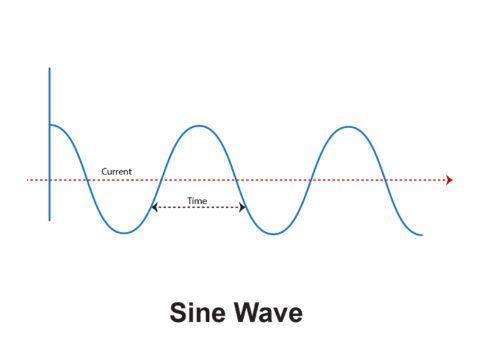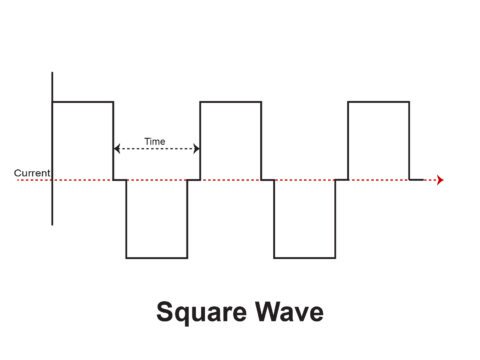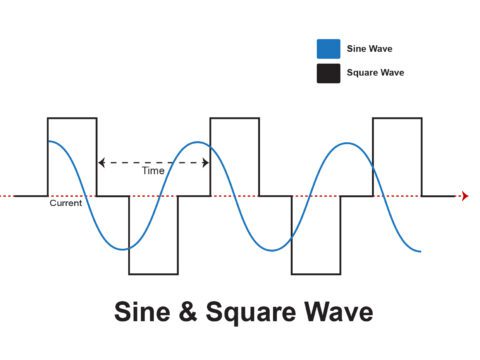

The sine wave inverter displays a much wider voltage tolerance and can handle variations better than the square wave inverter, which offers a more limited range. This means the devices connected to a pure sine wave inverter are more likely to sustain damage due to voltage irregularities in the incoming power.
Navigating the world of modern-day electronics can be overwhelming, making you feel like you’re lost in a maze of waveforms. When you want to update your knowledge on power supply essentials, it’s crucial to understand the difference between a sine wave inverter and a square wave inverter.
Both of these inverters convert direct current (DC) to alternating current (AC). However, the quality of the AC output can have significant implications for the performance and health of your electronic devices. In this guide, we’ll explain the technical terms and provide a detailed comparison of these two common types of power inverters.
What is a Sine Wave Inverter?
A sine wave inverter, also known as a pure sinewave inverter, is an electronic device that generates an AC power output that is almost identical to the power received from a grid power. A sine wave inverter produces purest waveform and mimics the smooth, wave pattern that’s standard in home or office AC outlets. Known for their high-quality output, sine wave inverters are compatible with a wide range of devices, especially sensitive appliances such as laptops, smartphones, refrigerators microwave and medical equipment.

The Technical Precision of a Sine Wave Inverter
Sine wave inverters go through a complex process to create a smooth sine wave output. They use advanced circuitry to filter the DC input and create a clean AC output that provides precise voltage and frequency control. This control is essential for preventing any electrical noise or ripple that could harm sensitive electronics.
What is a Square Wave Inverter?
On the other hand, a square wave inverter is a much simpler device, often seen as the earliest form of power inverter technology. It generates an AC output with a waveform that approximates a square, with steep inclines and descents at 90-degree angles. These inverters are less expensive to produce and are commonly used in power tools and other heavy-duty equipment that can handle a rougher AC output.

The Rough Edges of the Square Wave
A square wave inverter produces a rough, block-like waveform that can cause issues with certain equipment. While it can power basic appliances and resistive loads such as light bulbs or heaters, we do not recommend using it for modern electronics or appliances with motors. These can overheat and fail prematurely because of the high harmonic content of the waveform.
Difference between Sine Wave vs Square Wave Inverter
To make the comparison more clear, let’s take a look at difference between sine wave and square wave inverter, side-by-side across several key points:

| S.no. | Aspect | Sine Wave Inverter | Square Wave Inverter |
|---|---|---|---|
| 1. | Waveform | Generates a smooth and continuous wave identical to grid supply | Produces a chopped, stepped wave that's less stable and more noisy |
| 2. | Application | Suitable for all types of electronic and electrical appliances | Limited use due to compatibility with a broad range of appliances |
| 3. | Application | Generally more efficient due to less energy loss as heat | Lower efficiency due to the system's design and the type of waveform |
| 4. | Cost | Higher cost of production and purchase | Lower cost due to simplified design and lower manufacturing costs |
| 5. | Battery Life | Longer battery life, as less energy is wasted as heat | Shorter battery life due to higher energy loss and potential damage |
| 6. | Performance Impact | Higher level of safety for your appliances and devices | Higher risk of damage and malfunction of sensitive electronics |
Hence, Square wave vs Sine wave inverter comparison clearly shows why a sine wave inverter is the superior choice for most residential, commercial, and industrial applications that require the operation of sensitive electronic equipment.
Sine Wave vs Square Wave Inverter in Depth
Application Area
A sine wave inverter is a universal option, suitable for a kitchen blender and a personal computer as the digital control systems and delicate equipment require a consistent sine wave. Meanwhile, a square wave inverter is only suitable for simple electrical devices or appliances such as power tools and heating elements that don’t have sensitive electronic components.
Energy Efficiency
Sine wave inverters tend to be more energy efficient as they produce less heat as by-products, especially when running loads with power conditioning equipment such as a UPS. Conversely, square wave inverters are less efficient due to the inherent design limitations and can result in higher energy costs over time.
Voltage Tolerance
The sine wave inverter displays a much wider voltage tolerance and can handle variations better than the square wave inverter, which offers a more limited range. This means the devices connected to a pure sine wave inverter are more likely to sustain damage due to voltage irregularities in the incoming power.
Understanding the Impact on Devices
To appreciate the significance of the waveform, consider the specific requirements of your devices:
Heating Devices: Devices like toasters, space heaters, and incandescent light bulbs can function on almost any type of modified AC, including square waves, without significant negative consequences.
Switched-Mode Power Supplies (SMPS): Most modern electronics use SMPS, which are sensitive to the shape of the AC wave and require a pure sine wave for efficient and safe operation.
Motors and Compressors: Appliances like refrigerators and air conditioners with motors and compressors can face issues with eddy currents and waste heat when run on non-sine wave currents, reducing efficiency and lifespan.
In conclusion, whether in a residential setting or when powering a mobile office setup, investing in a quality sine wave inverter may seem like an upfront cost but will save you from potential damage, limitations, and additional operational costs associated with square wave inverters.


